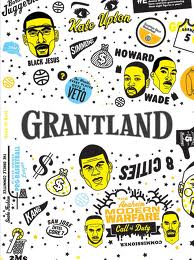 SOUNDTRACK: MELLOTRON VARIATIONS-Tiny Desk Concert #954 (March 3, 2020).
SOUNDTRACK: MELLOTRON VARIATIONS-Tiny Desk Concert #954 (March 3, 2020).
 Most Tiny Desk Concerts list the musicians and what instrument they play. So I got a kick out of this lineup:
Most Tiny Desk Concerts list the musicians and what instrument they play. So I got a kick out of this lineup:
John Medeski: Mellotron; Jonathan Kirkscey: Mellotron; Robby Grant: Mellotron; Pat Sansone: Mellotron. [that’s the lineup left to right].
Indeed, Mellotron Variations are four guys standing behind Mellotrons making a universe of sounds.
The Mellotron was a magical 1960s invention that predates sampling. It’s a keyboard instrument, with each piano key triggering a tape loop — the sound could be a string ensemble, a flamenco guitar, a saxophone and so much more. Think about the flute sounds on The Beatles’ song “Strawberry Fields Forever” and you get the idea.
We’ve never had an original Mellotron at the Tiny Desk until now. Much like a Hammond organ, it’s big, heavy and fragile. When they fired it up, with all its mechanical gears turning tape loops and moving play heads, the 15-year-old geek in me blissed out.
Pat Sansone introduces the band and gives a fascinating history of the Mellotron and how it works. Each of the 35 keys plays a magnetic tape like on a reel to reel player (I remotely understand that and it is cool to see the mechanism at work). The modern ones, still made by Mellotron are all digital.
When Mellotron Variations keyboardist Robby Grant and I began discussing an all-Mellotron Tiny Desk, we quickly realized that having four of these beasts wouldn’t fit behind my desk. So Robby Grant, Pat Sansone (Wilco) and Jonathan Kirkscey performed on the portable — and still incredible-sounding — 21st-century version of the instrument. At the same time, John Medeski (Medeski, Martin & Wood) tackled the original beast.
The band plays three songs. The first, “Agent Cha Cha” sounds like a trippy spy movie. It’s really fun watching Medeski play the original machine and seeing him kind of forcibly make the sounds do what he wants–I guess he is literally slowing down the tape that’s playing?
Robby Grant seems to handle all of the drums and percussion. It’s then fun to watch as Sansone holds down one key to get a 60’s cartoon melody mid song.
Jonathan Kirkscey and Robby Grant play some real spacey, synthy sounds as they segue into the next song.
“Dulcimer Bill” opens with some dulcimer sounds. It is trippy and spacey sounding for a bit and then Sansone plays what S. immediately recognized as the opening to The Beatles’ “Bungalow Bill.” I assume Sansone has simply sampled the guitar as he plays it with one key. The end of the song sounds so incredibly 70s (Pink Floyd all over the place)
The sonic landscape they produce as Mellotron Variations is ingenious and impressive. It’s a score with the audience as collective filmmaker, each one of us capable of creating imagery in our heads to this music of mystery and sometimes comedy. In the words of my teenaged self, “it was a trip.”
The trip concluded with “Pulsar.” The song opens with industrial space sounds from Kirkscey while Medeski plays flute loops. Grant adds the drums while Sansone plays a kind of harpsichord in space.
[READ: March 30, 2020] “Futures”
This is a story about tennis.
It reminded me a lot of David Foster Wallace’s essay about Roger Federer. Not because it was like it in any way, but because the one character felt about Federer the way Wallace did.
But that aspect is somewhat minimal in terms of the plot.
The story Toby lives with his father. Toby was supposed to become an professional tennis player, but he was never quite good enough. But Toby’s father insisted upon hosting a young Asian tennis player every year–in part to bet upon his success (Toby’s father was a gambler) but also to have a tennis pro around to help Toby get better. (more…)












 SOUNDTRACK: The Believer June/July 2007 Music Issue Compilation CD: Cue the Bugle Turbulent (2007).
SOUNDTRACK: The Believer June/July 2007 Music Issue Compilation CD: Cue the Bugle Turbulent (2007). The 2007 Believer disc smashes the mold of folkie songs that they have established with the previous discs in the series. The theme for this disc is that there’s no theme, although the liner notes give this amusing story:
The 2007 Believer disc smashes the mold of folkie songs that they have established with the previous discs in the series. The theme for this disc is that there’s no theme, although the liner notes give this amusing story: